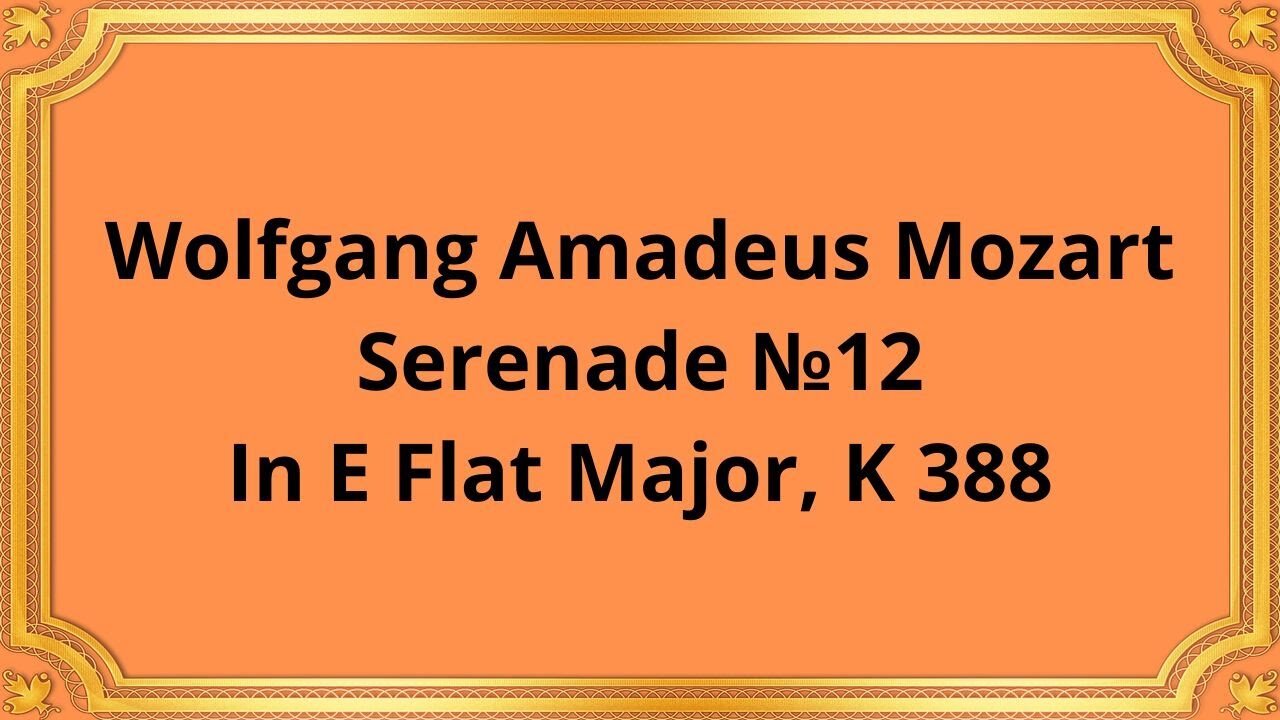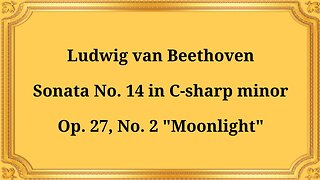Premium Only Content

Wolfgang Amadeus Mozart Serenade №12 In E Flat Major, K 388
#Mozart#Chamber_music#Classical_music#Serenade#Musical_composition
Wind Association of the Vienna Philharmonic
HANS KAMESCH
Oboe LEOPOLD WLACH IAP VV OBA
Oboe FRANZ BARTOSEK
Clarinet GOTTFRIED VON FREIBERG Fei,
Clarinet LEOPOLD KAINZ
Mozart composed the Serenade №12 in E-flat Major, K 388, in 1782 during his stay in Vienna. It was commissioned by Count von Zichy, an avid music lover and patron of the arts. Mozart dedicated the serenade to him as a gesture of gratitude. The piece was originally written for a small ensemble of 12 instruments, including four violins, two violas, two cellos, two clarinets, and two horns.
The Serenade №12 in E-flat Major, K 388, is composed of seven movements, each with its unique tempo, key, and character. The first movement, marked Allegro, is in sonata form and features a lively and energetic melody. The second movement, marked Andante, is a slower and more lyrical piece that showcases Mozart's gift for crafting beautiful melodies. The third movement, marked Menuetto, is a minuet and trio that has a charming and dance-like quality.
The fourth movement, marked Adagio, is a beautiful and expressive piece that features a haunting melody played by the clarinets. The fifth movement, marked Menuetto, is another minuet and trio that has a more serious and dramatic tone. The sixth movement, marked Andante, is a gentle and peaceful piece that features the violins playing a lovely duet. Finally, the seventh movement, marked Allegro, is a joyful and exuberant piece that brings the serenade to a satisfying conclusion.
One of the most notable features of the Serenade №12 in E-flat Major, K 388, is the use of musical motifs throughout the piece. A motif is a short musical phrase that is repeated and developed throughout a composition. In this serenade, Mozart uses several motifs that are woven together to create a cohesive and harmonious whole.
One of the most prominent motifs is the opening four-note phrase that appears in the first movement and is repeated throughout the piece. Another motif is the descending three-note pattern that appears in the second movement and is echoed in the fourth and sixth movements. These motifs, along with others, create a sense of unity and coherence in the serenade.
Conclusion
The Serenade №12 in E-flat Major, K 388, is a masterpiece of chamber music that showcases Mozart's exceptional talent for melody and composition. Its seven movements, each with its unique character and tempo, take the listener on a journey of emotion and musical expression. By utilizing musical motifs and a diverse ensemble of instruments, Mozart creates a work of art that has stood the test of time and continues to captivate audiences today.
-
 18:26
18:26
Classical music_Music Inspiration
2 days agoLudwig van Beethoven Sonata No. 14 in C-sharp minor, Op. 27, No. 2 "Moonlight"
441 -
 LIVE
LIVE
Adam Does Movies
4 hours agoTalking Movies + Ask Me Anything - LIVE
183 watching -
 29:54
29:54
Producer Michael
9 hours agoThe Art Of Layering Luxury Fragrances
441 -
 LIVE
LIVE
Anthony Rogers
21 hours agoEpisode 373 - Darkside of the Smokey Mountains
152 watching -
 LIVE
LIVE
AlaskanBallistics
7 hours agoShooting the Wyoming Arms .22lr Suppressor Live!
129 watching -
 1:24:38
1:24:38
Glenn Greenwald
5 hours agoProf. John Mearsheimer on U.S./Israeli War with Iran, Gaza, Trump's Foreign Policy, and More | SYSTEM UPDATE #475
78.4K51 -
 LIVE
LIVE
VapinGamers
3 hours agoSplitGate 2 with ThisIsTheRay - !rumbot
87 watching -
 LIVE
LIVE
megimu32
1 hour agoON THE SUBJECT: Movie Heroes Who Raised Us - From McClane to Mr. Miyagi
161 watching -
 LIVE
LIVE
Spartan
4 hours agoPro Halo Player | Sens Crisis Grind | Ranked Arena, Probably SWTOR at some point
111 watching -
 1:24:49
1:24:49
RiftTV/Slightly Offensive
6 hours agoCeasefire VIOLATED, War RAGES On.. Will Iran Make a DEAL? | The Rift | Guest: Sarah Stock
50.9K9